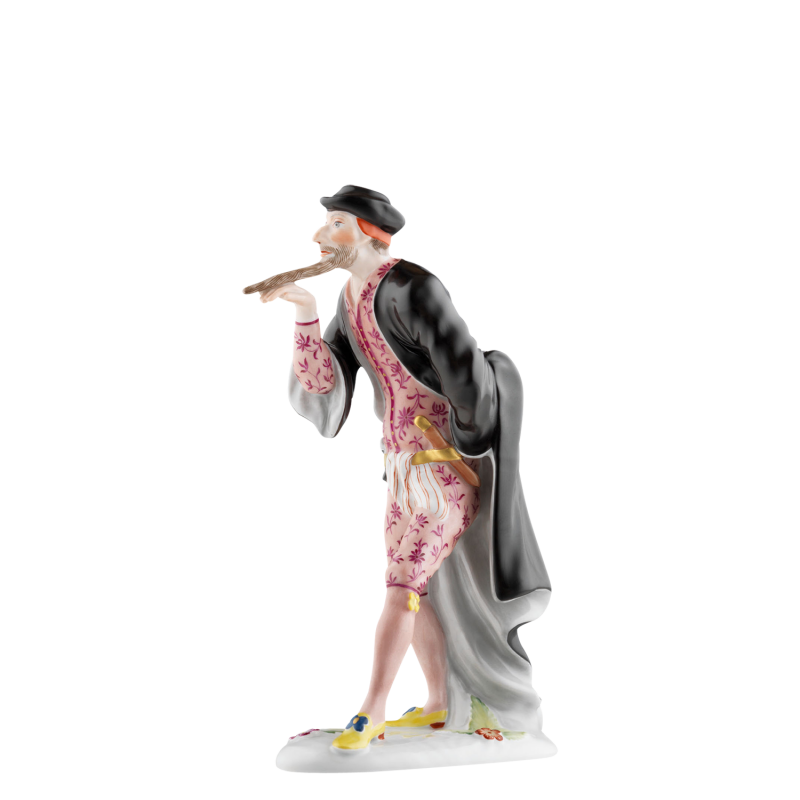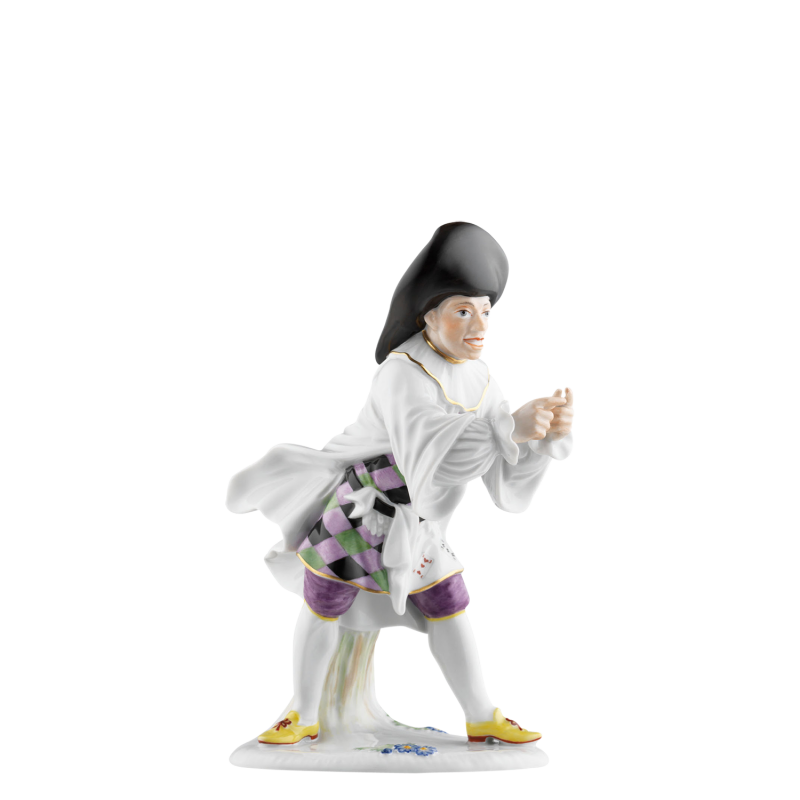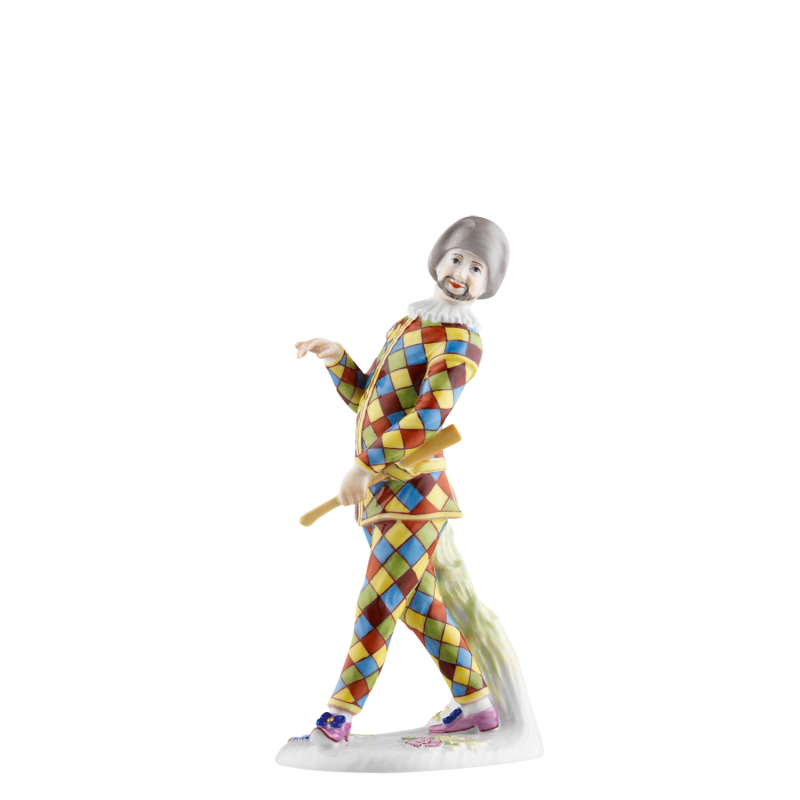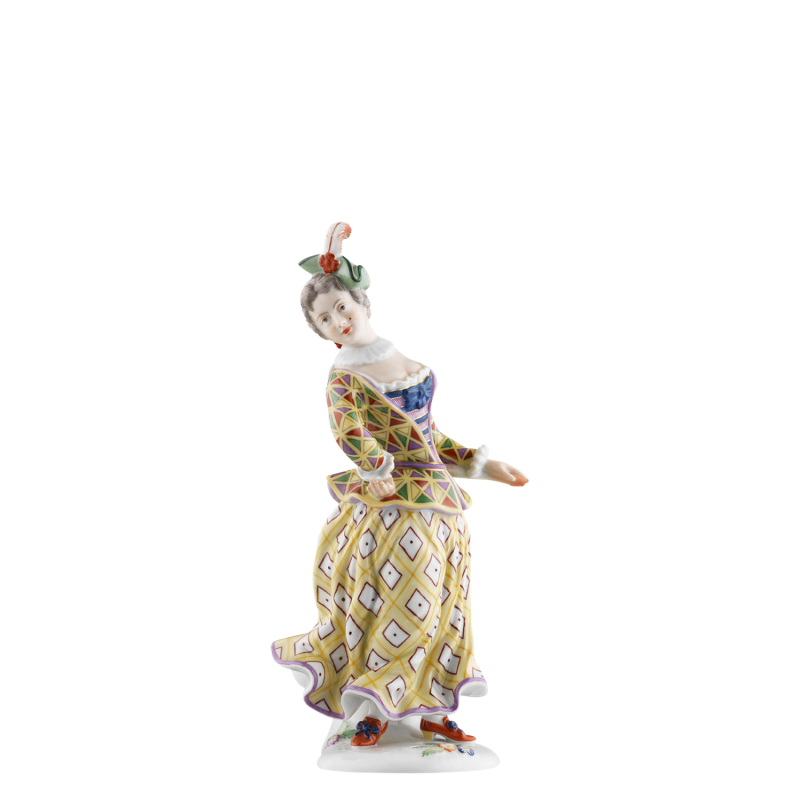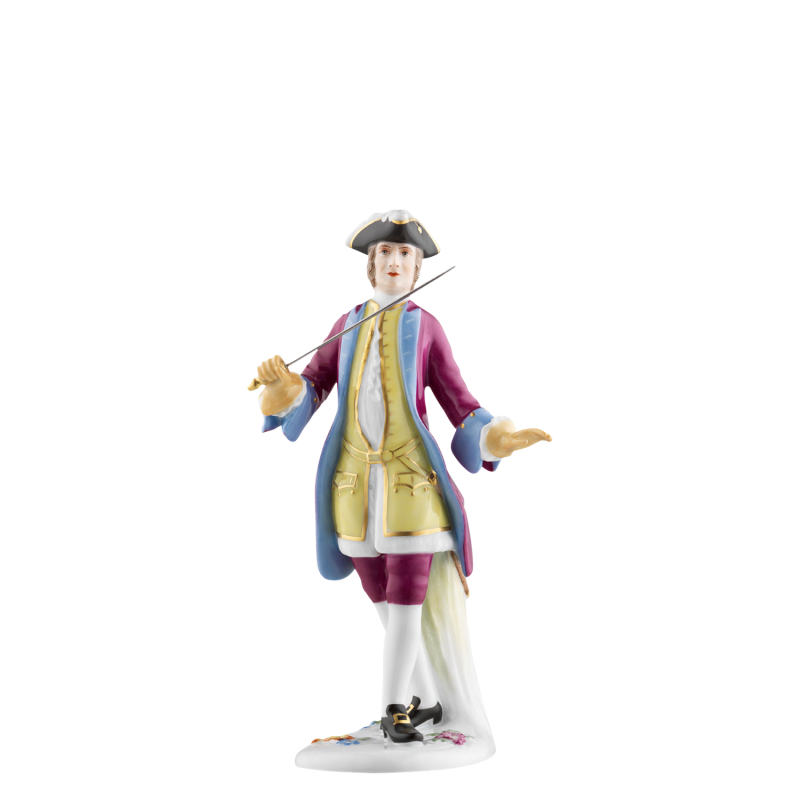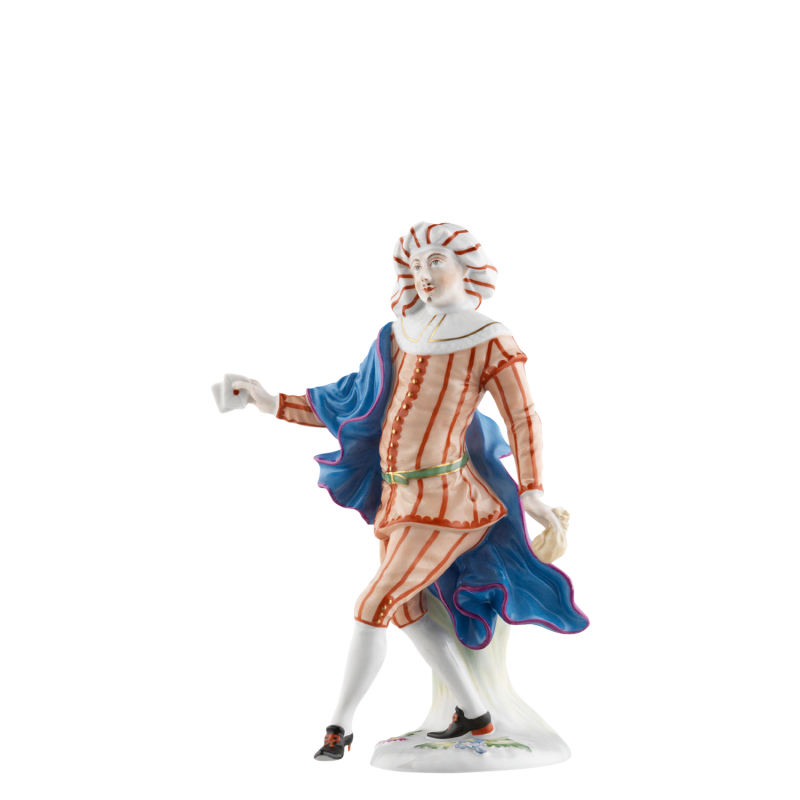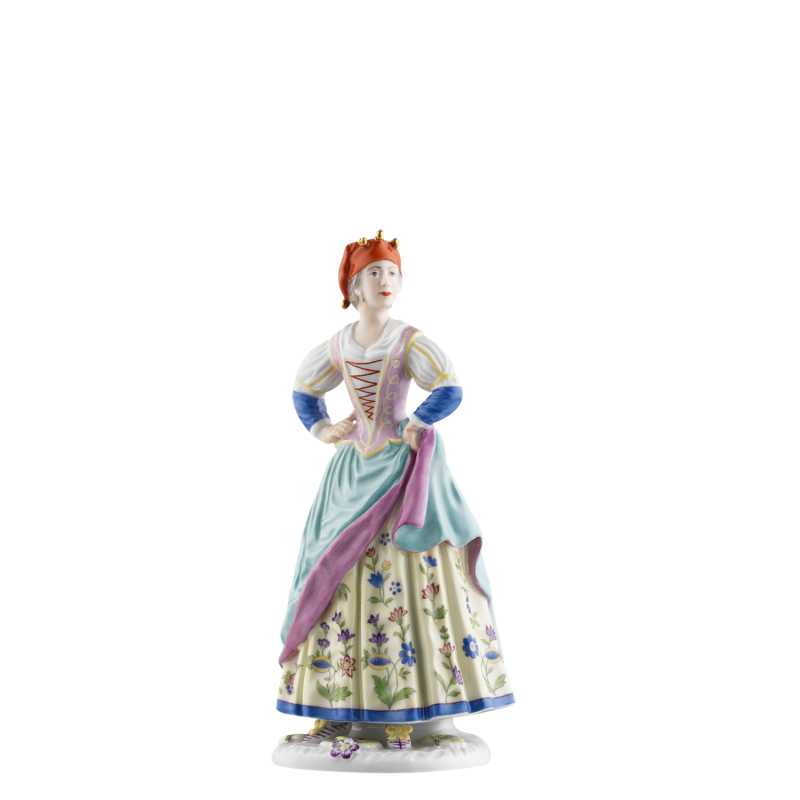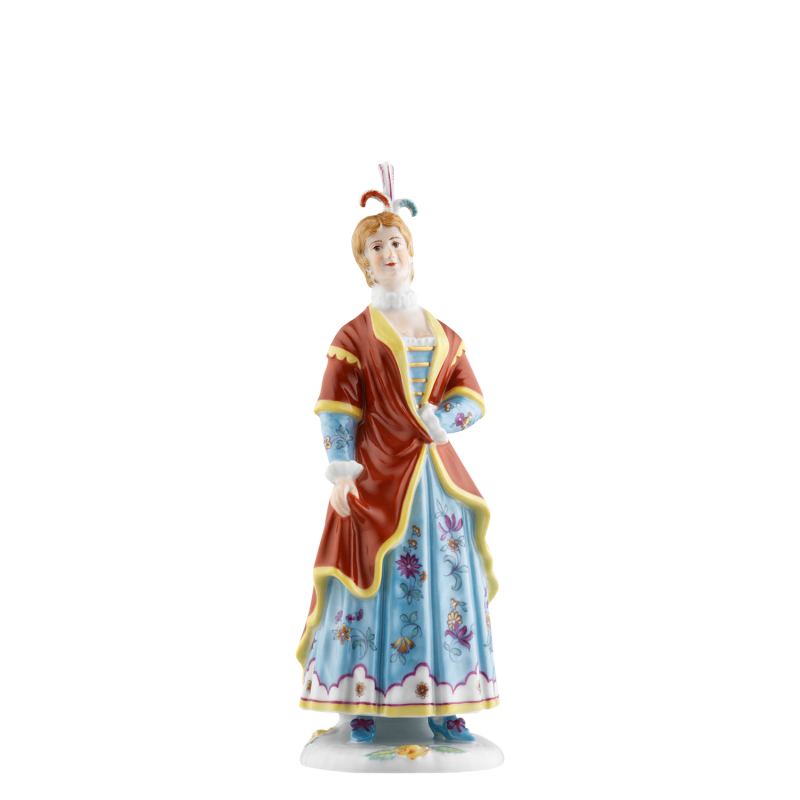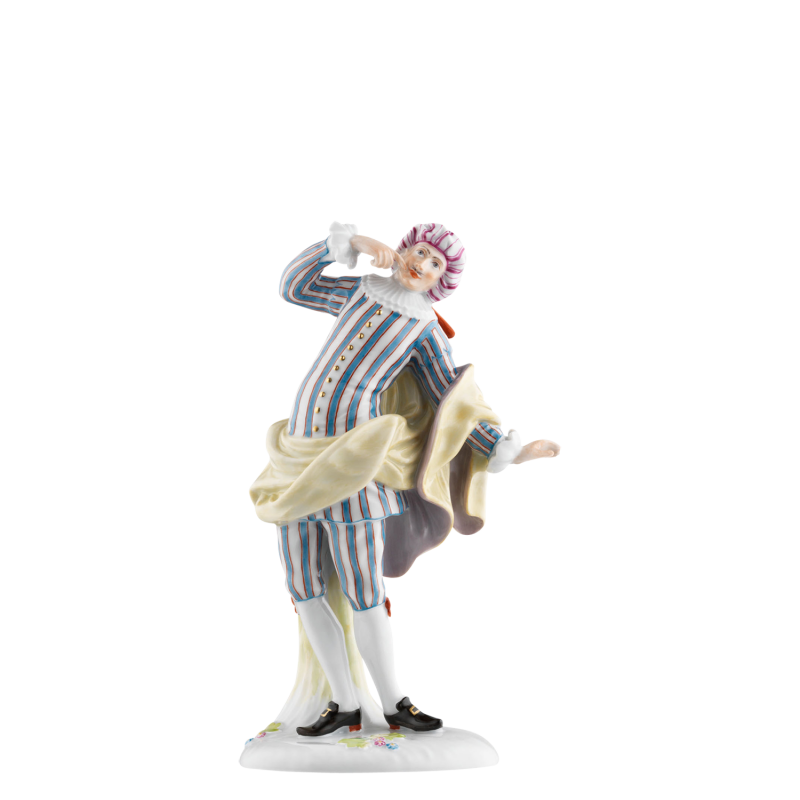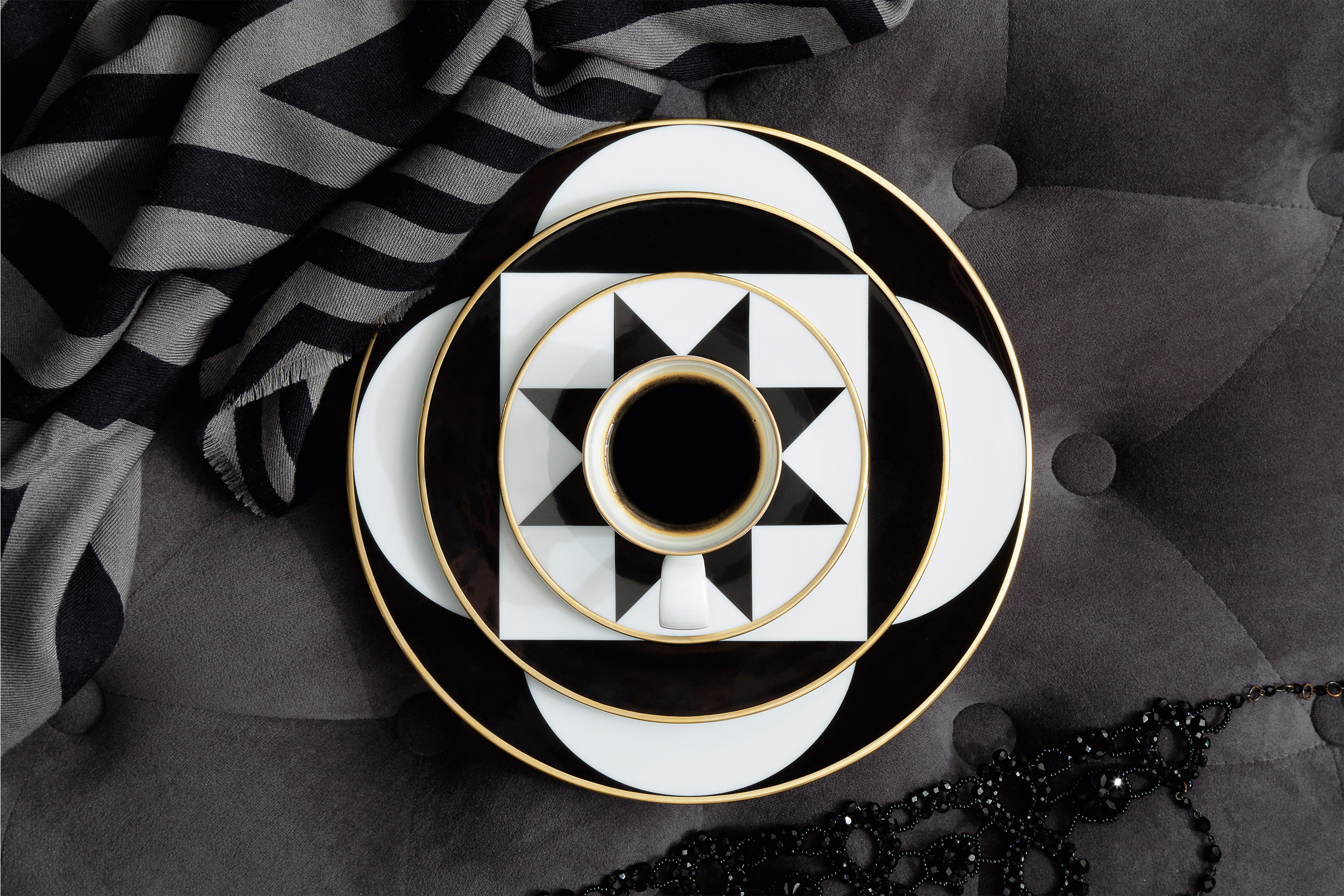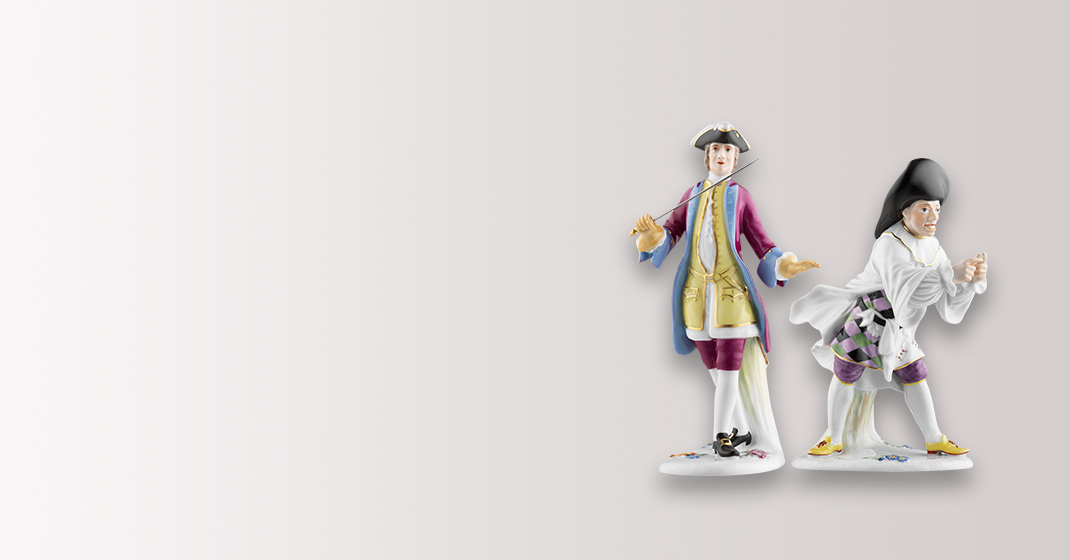
Commemedia dell´Arte
Historical group of figurines. More information
GET INTO THE RANGE DIRECTLY
HOME WITH A FEW CLICKS
COMMEDIA DELL'ARTE
The artistic design of figures from Italian impromptu comedy was a popular theme for porcelain manufacturers in the 18th century.
The "Commedia dell'Arte" was created around 1550. The "Commedia dell'Arte" was performed in the streets and squares by professional actors on mobile stages, for whom the play texts were only prescribed as the plot and sequence of scenes; the dialog was improvised and certain jokes were frequently repeated. The main protagonists of the "Commedia dell'Arte" were comic characters who always wore the same make-up and costume, although the casts changed. Basically, in the "Commedia dell'Arte" there were the "old men", who usually also represented the lords and ladies of the upper classes, and the servants, the Zanni. They stood for the common people and often had the laughs on their side when they duped the high lords, the elderly, or defended and protected the lovers against the strict parents/elders. The sly Harlequin of the "Commedia dell'Arte" is the best known of the Zanni, made famous in the play "The Servant of Two Masters", 1746 by Carlo Goldoni. The archetype of the old man in the "Commedia dell' Arte" was the Pantalone, known as il Magnifico, a rich but stingy merchant from Venice who kept his buttoned-up money bag safely hidden under his long coat.
At the FÜRSTENBERG porcelain manufactory, founded in 1747, Simon Feilner, one of the most important modellers of his time, created his Commedia dell'Arte group as early as 1753/54. It is one of the first figurative creations of the FÜRSTENBERG manufactory and is considered a particularly valuable, artistically independent creation of the porcelain manufactory. They appear so "real" that they could successfully bring their respective characters to the stage. - Feilner's model was a series of copperplate engravings by Johann Jacob Wolrab, Nuremberg 1720.
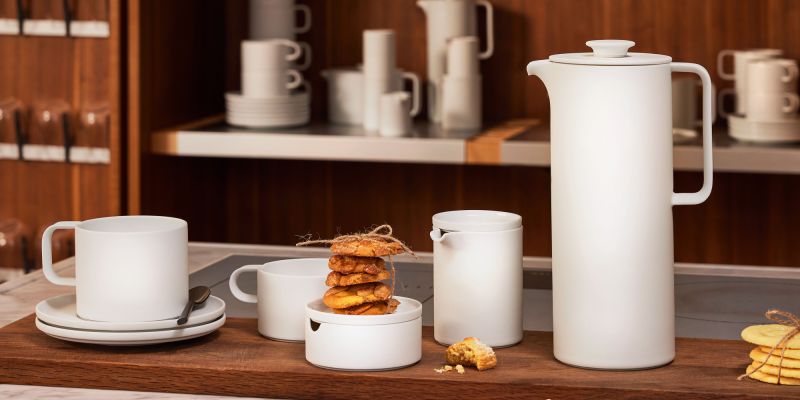
YOU MIGHT ALSO LIKE THIS






